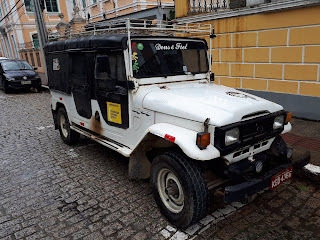Seeing a Ford Mondeo Mk.4 always gets me thinking about the way a 4-valve per cylinder engine is overrated. Considering the Diesel versions, which were available in 1.6L versions with the DLD-416 engine co-developed with Peugeot either in 16-valve until 2011 or 8-valve afterward, 1.8L with the DLD-418/Duratorq TDCi based on a Ford's own previous Lynx/Endura-D/TDDi engine series always with 8 valves, and the Peugeot 2.0L DW10 and 2.2L DW12 renamed by Ford as ZSD-420 and ZSD-422 always with 16 valves. As surprising as the reduction in the amount of valves might have seemed when it comes to the 1.6L engine, it was not pointless at all. The main reason stated for that switch was emissons-related, as it was implemented when Euro-5 rules became enforced in Europe, with the intake and exhaust porting and the lesser valvetrain inertia benefitting low-end throttle response. Nitrogen oxides emissions, which is the target for the most recent complaints about Diesel engines in general, also decreased due to the restriction on the mass air flow decreasing the internal pressure and aerodynamic heat from compression, thus leading to a condition not so ideal for NOx to form. The lower amount of vaporising latent heat available also reflected on fuel consumption, since a smaller volume of fuel could be injected at each cycle in order to provide a complete combustion.
Wednesday, March 20, 2019
Tuesday, March 19, 2019
Stretched canvas-top Toyota Bandeirante with 4 doors
There were times when Toyota ruled the 4WD market in Brazil with the Bandeirante, a local derivative of the 40-series Land Cruiser, but not every body configuration available in other countries was offered locally. One of the alternatives to fill this gap was stretching regular canvas-top ones in order to increase its hauling capacity for both passengers and cargo. This modification was mostly performed in Brejo da Madre de Deus, a small town in the countryside of Pernambuco state, with many of the so-called "Toyotão" (Big Toyota) used for intercity shuttle services.
Its role bore some resemblance to the Philippine jeepney based on military surplus Willys Jeeps, but the Toyotão was mostly based on civilian versions and, unlike the jeepney, there were no independent companies developing longer copies of the Bandeirante by their own. Full body enclosure also differentiates it, even though it always relies on canvas roof and doors instead of metallic roofs.
Its role bore some resemblance to the Philippine jeepney based on military surplus Willys Jeeps, but the Toyotão was mostly based on civilian versions and, unlike the jeepney, there were no independent companies developing longer copies of the Bandeirante by their own. Full body enclosure also differentiates it, even though it always relies on canvas roof and doors instead of metallic roofs.
Subscribe to:
Posts (Atom)




